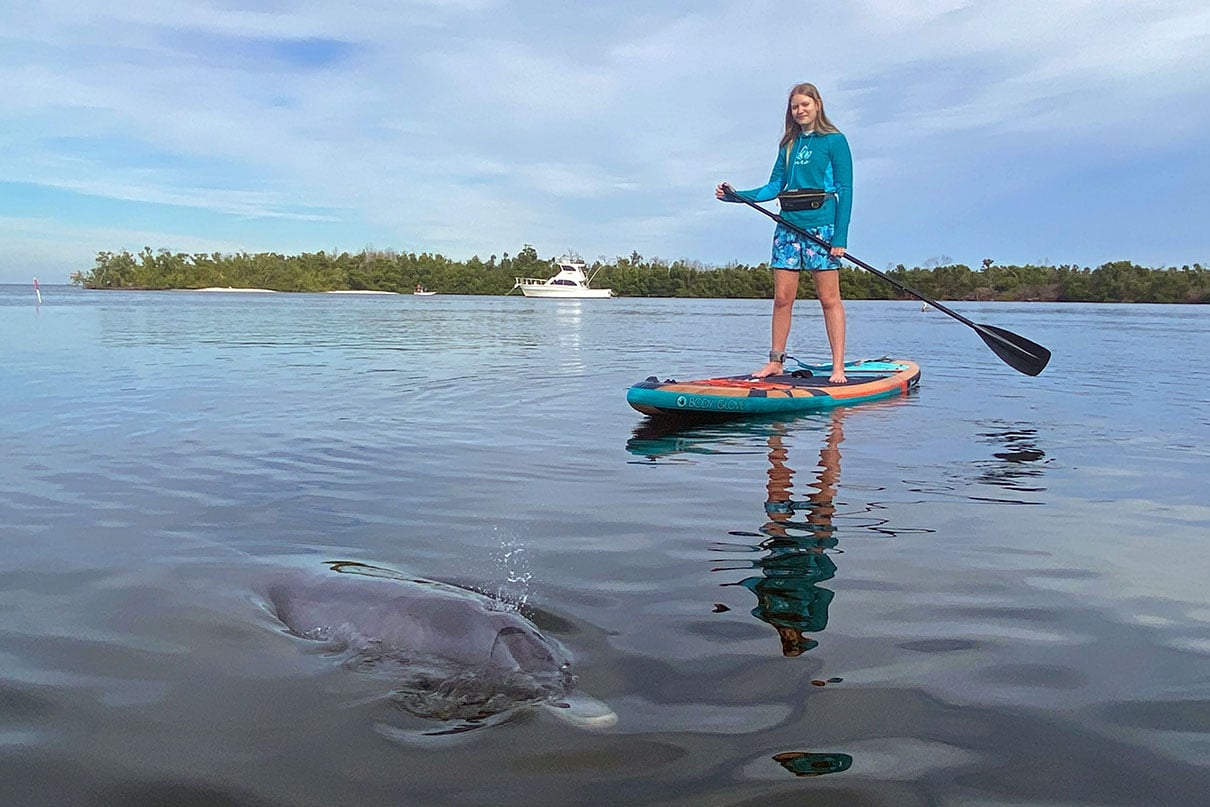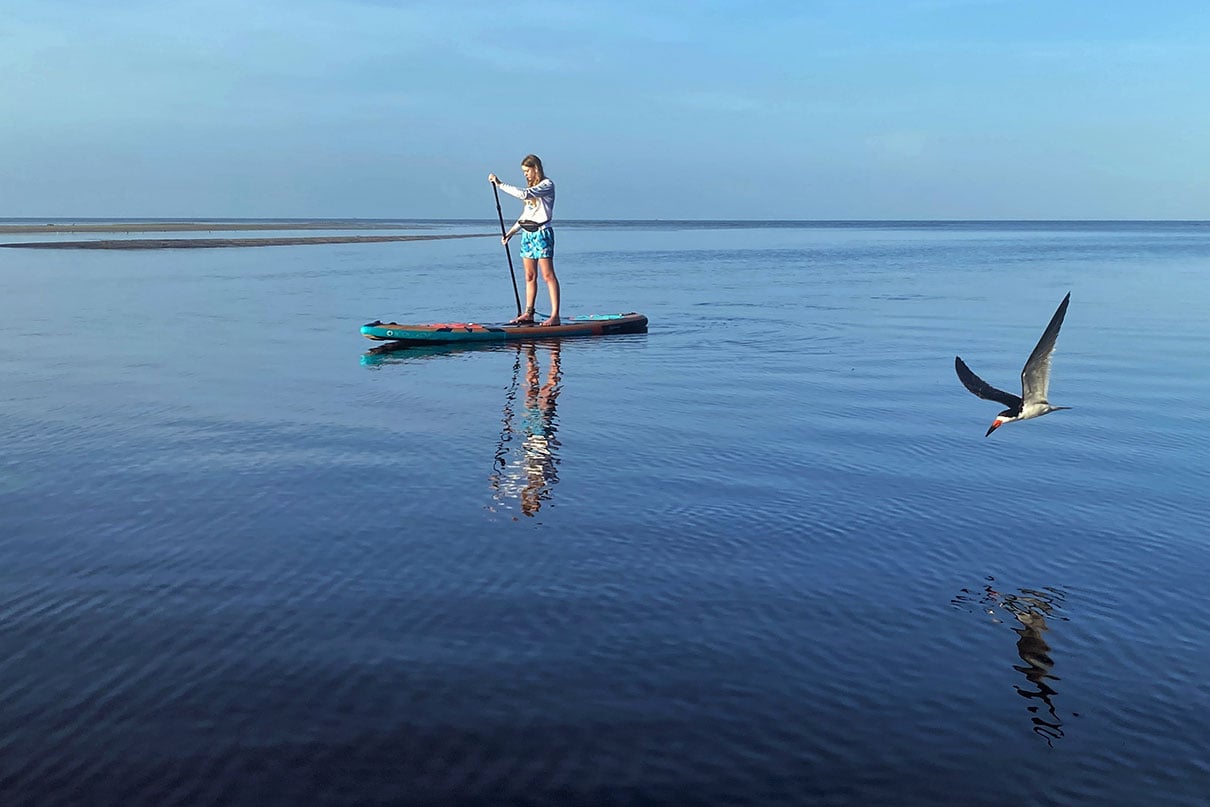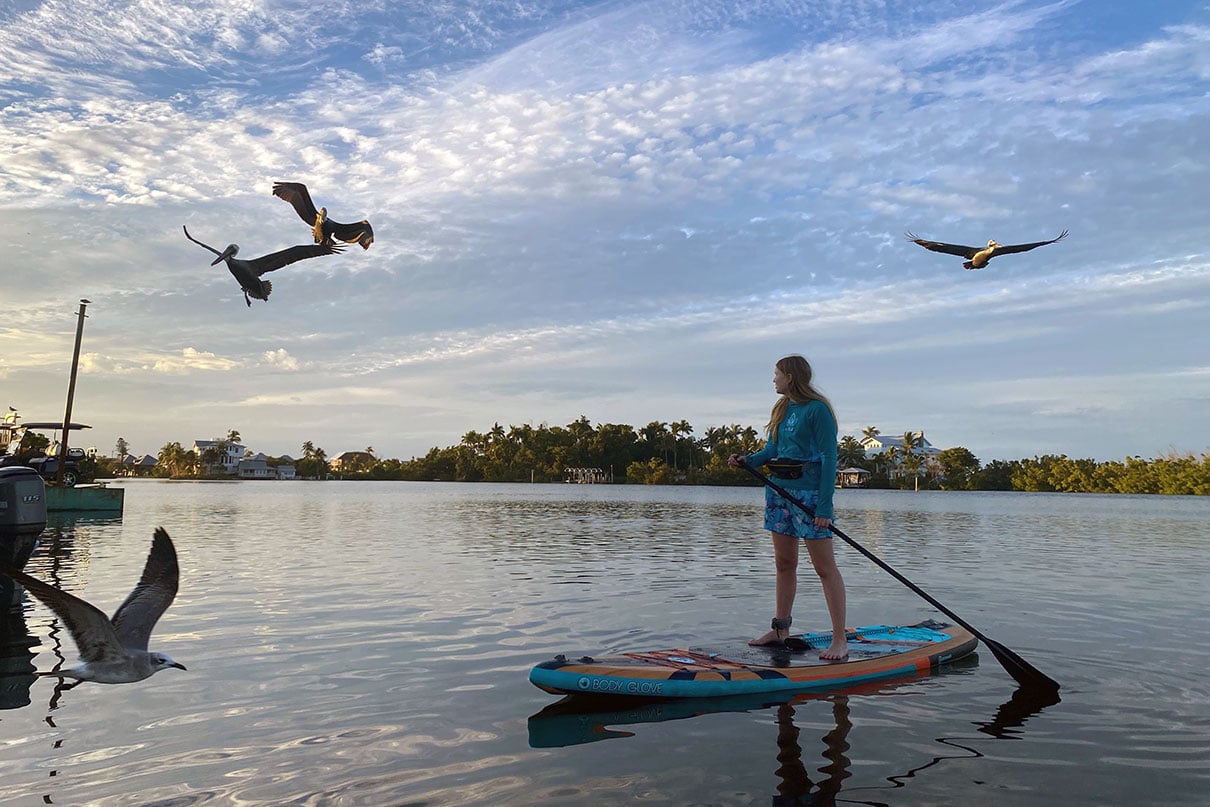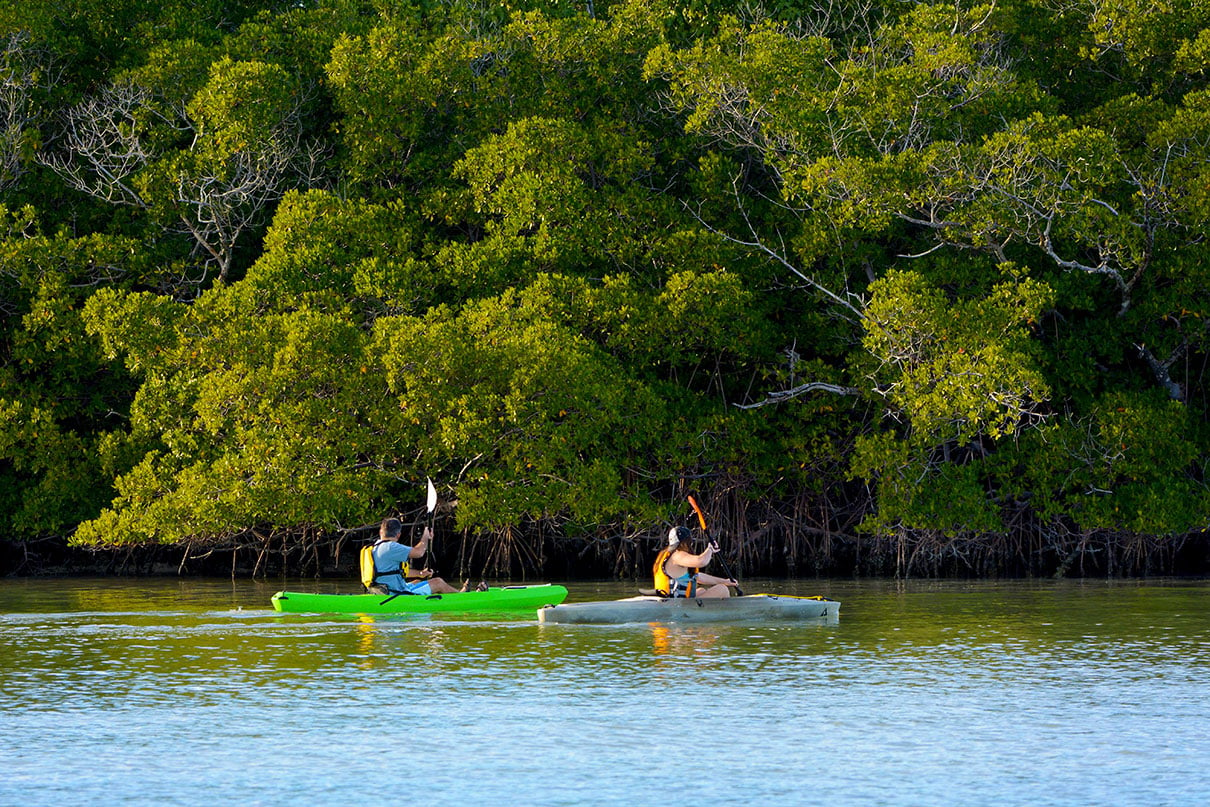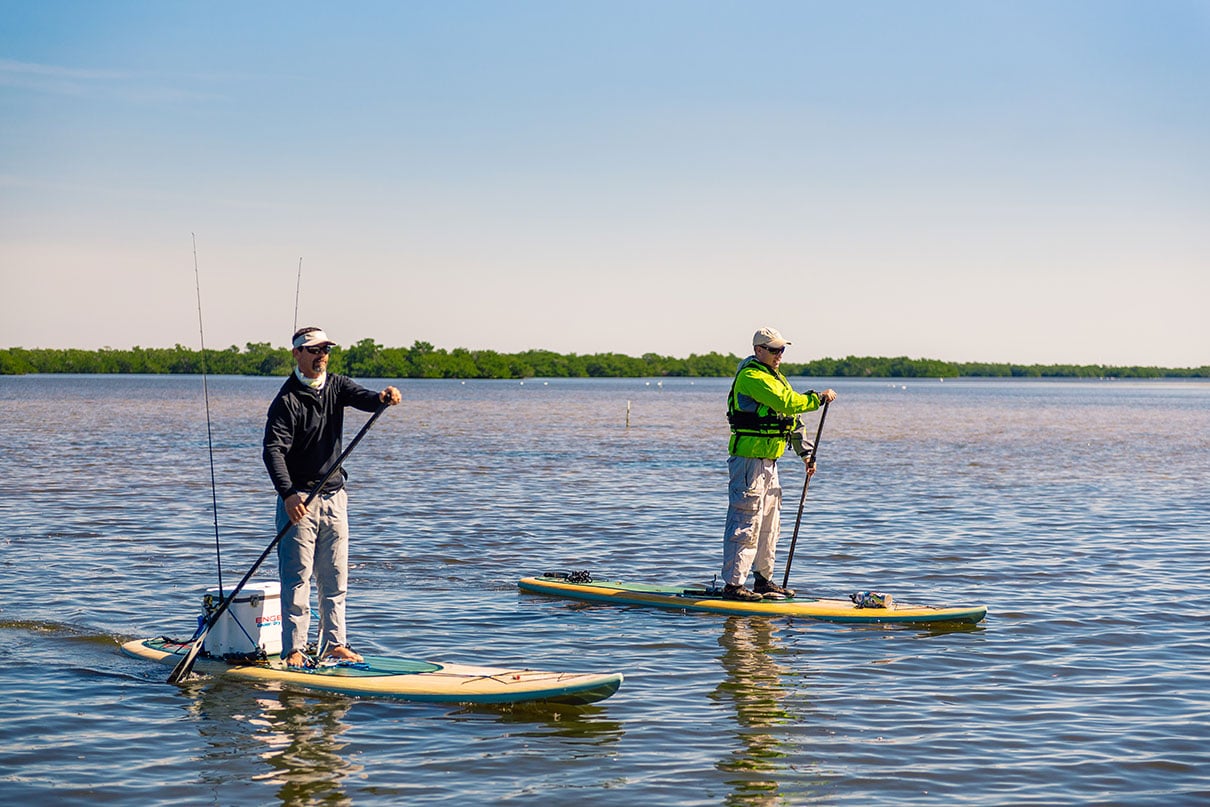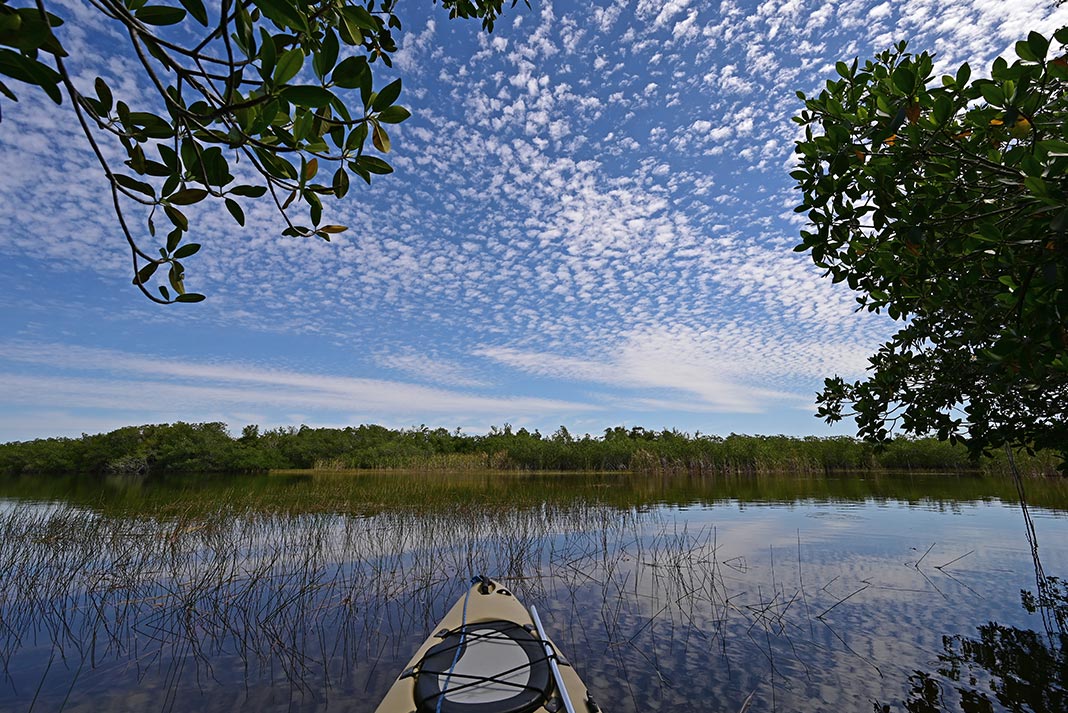Whether you’re seeking solitude in Southwest Florida’s wild landscapes or craving a lively day on the water, the Great Calusa Blueway paddling trail offers the best of both worlds. This 190-mile trail winds through mangrove tunnels, past pristine beaches, and down historic rivers, and even allows for stops at resorts and restaurants along the way.
The Great Calusa Blueway explores Estero Bay, Pine Island Sound, the Caloosahatchee River and each of the connecting bodies of water in between. Most paddlers simply enjoy a day trip or even a few hours on one of these stunning sections of the water trail. And while the weaving and looping blueway isn’t specifically designed as a thru-paddle, the abundant boat launches, marinas, town centers and campgrounds provide the possibility of planning multi-day trips to cover as much of the Southwest Florida region as you can handle. If this bird’s-eye-view hasn’t convinced you yet, let me share a few unique reasons why your next trip should be to this subtropical paddling trail.
Why every paddler should visit the Calusa Blueway
Rich history
The Great Calusa Blueway honors the legacy of the Calusa, a seafaring Native American tribe that thrived in Southwest Florida for centuries. Although the Calusa civilization ended around 1750, their presence is still felt today.
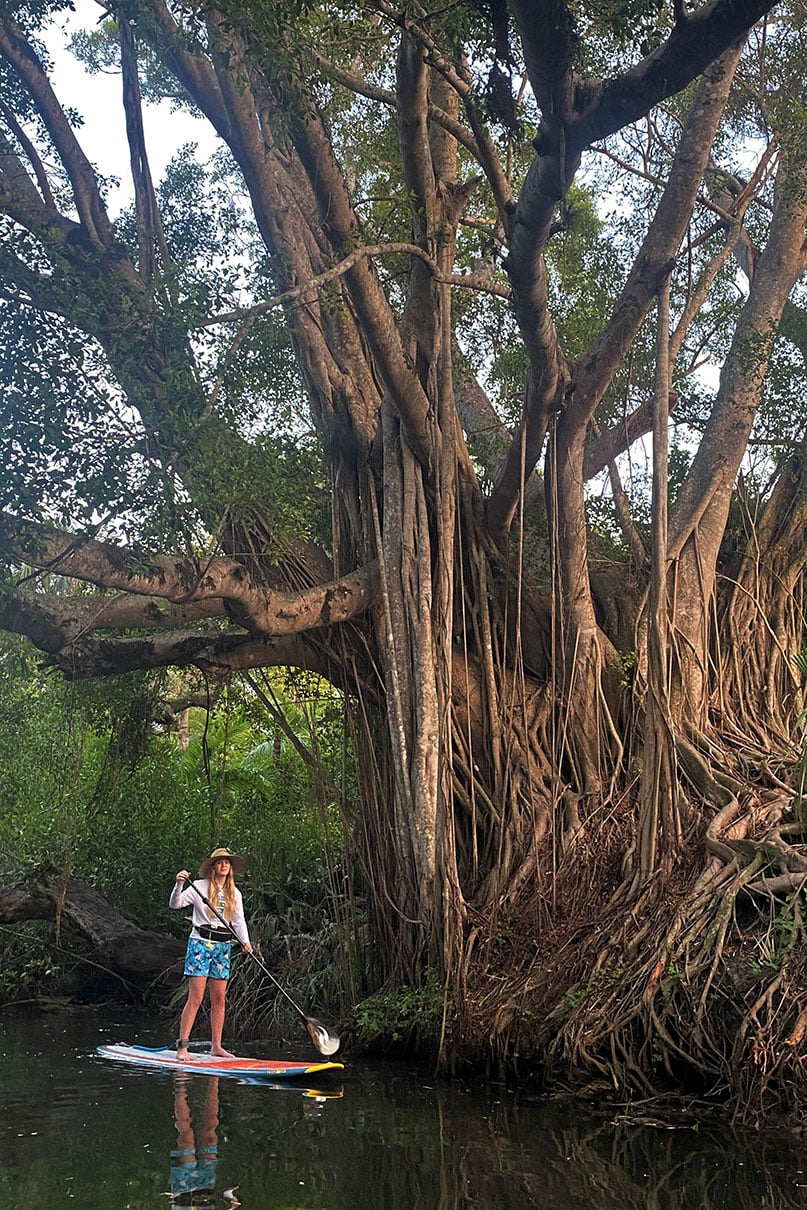
“The real reason to paddle the Calusa Blueway is the immediate connection you feel to history and nature,” says Mike Hammond, Calusa Blueway Coordinator for Lee County Parks & Recreation.
One of the three sections of the blueway follows the Caloosahatchee River, named after the Calusa, while another passes by Mound Key, believed to be their cultural hub. Along the way, visitors can collect shells, just like the Calusa, who were known as the “Shell Indians” and are considered Florida’s first shell collectors.
Diverse waterways
Established in 2002, the Great Calusa Blueway spans over 190 miles and has three distinct sections: Estero Bay, Pine Island Sound, and the Caloosahatchee River. Each section immerses paddlers in Florida’s natural beauty, history, and culture.
The Estero Bay section includes Koreshan State Park, where paddlers can stop to explore historic pioneer buildings and a preserved bamboo forest. You can also bury your feet in the sugar-sand beaches of Lovers Key State Park and land within the hustle and bustle of Fort Myers Beach—with easy access to waterfront dining.
For those seeking more remote adventures, the Pine Island Sound section offers seclusion amidst mangrove islands and tunnels teeming with wildlife. “You’re literally in a tunnel where little mangrove crabs are above you, fish are swimming underneath, and birds are squawking,” Hammond divulges.
The Caloosahatchee River is the latest addition to the blueway. Here you’ll float beneath moss-draped oak trees and leather ferns lining the shoreline, with side quest opportunities to wander back quiet offshoots and creeks.
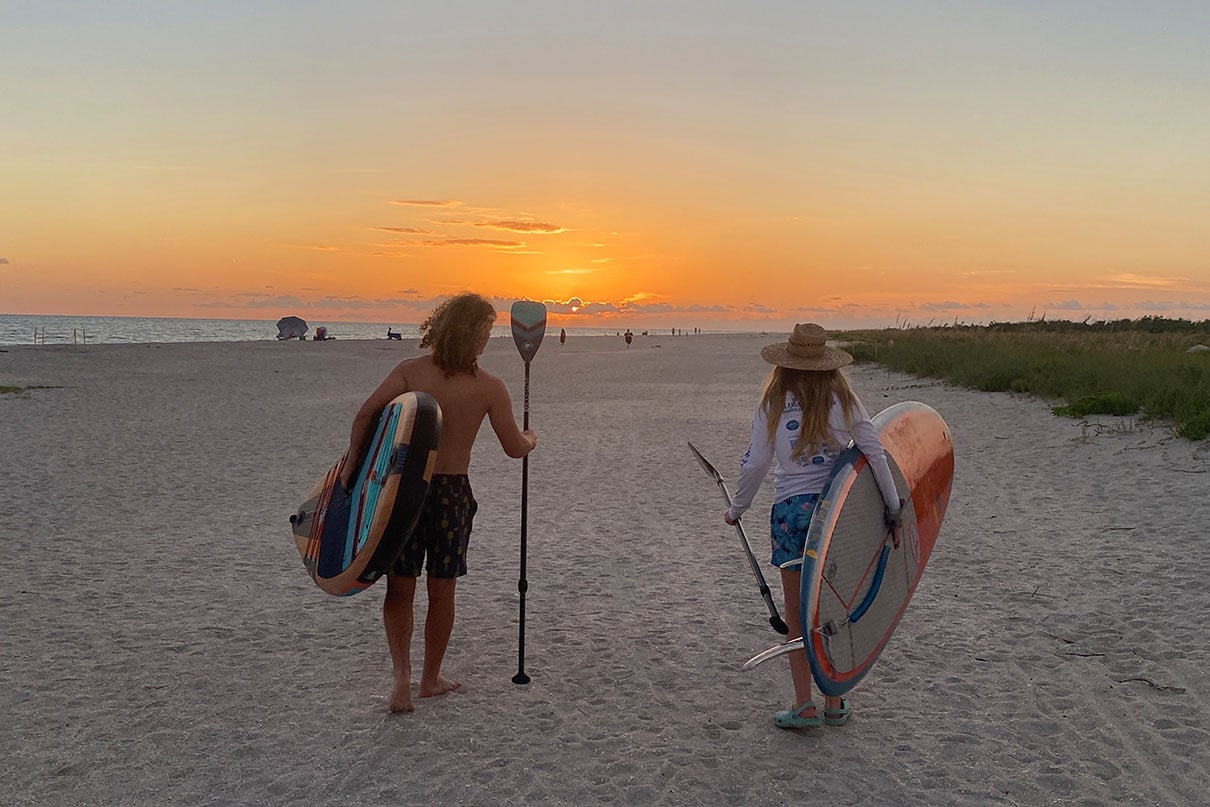
Stunning beaches
From the lively shores of Fort Myers Beach to the remote beauty of Cayo Costa State Park, paddlers along the blueway have their pick of beaches, even during peak tourist season. “There are some islands and beaches so isolated, you can have them all to yourself, even during the busiest times,” shares Hammond.
One of Hammond’s personal favorites is Bunche Beach Preserve. With over 700 acres of unspoiled land, visitors can enjoy a peaceful paddle through dense mangrove forests and spot wildlife while gliding through salt flats.
Bunche Beach also offers a perfect spot to witness stunning sunsets over San Carlos Bay and nearby Sanibel Island—an unforgettable experience accessible to paddlers of all skill levels.
Up-close wildlife encounters
There is no shortage of wildlife to observe along the Great Calusa Blueway. You may see dolphins splashing while hunting for fish, alligators basking on riverbanks, or manatees gliding through the waters of Estero Bay. For birdwatchers, J.N. “Ding” Darling National Wildlife Refuge on Sanibel Island is home to a diverse range of species, including white pelicans in the winter months, whose wingspans reaching up to nine feet are captivating.
Hammond recommends guided tours for paddlers unfamiliar with Florida’s wildlife etiquette. That way, you’ll have a chance to learn from locals about how to safely navigate encounters with manatees, alligators, and other wildlife before exploring on your own. Information on guided tours is easily available through the blueway’s website.
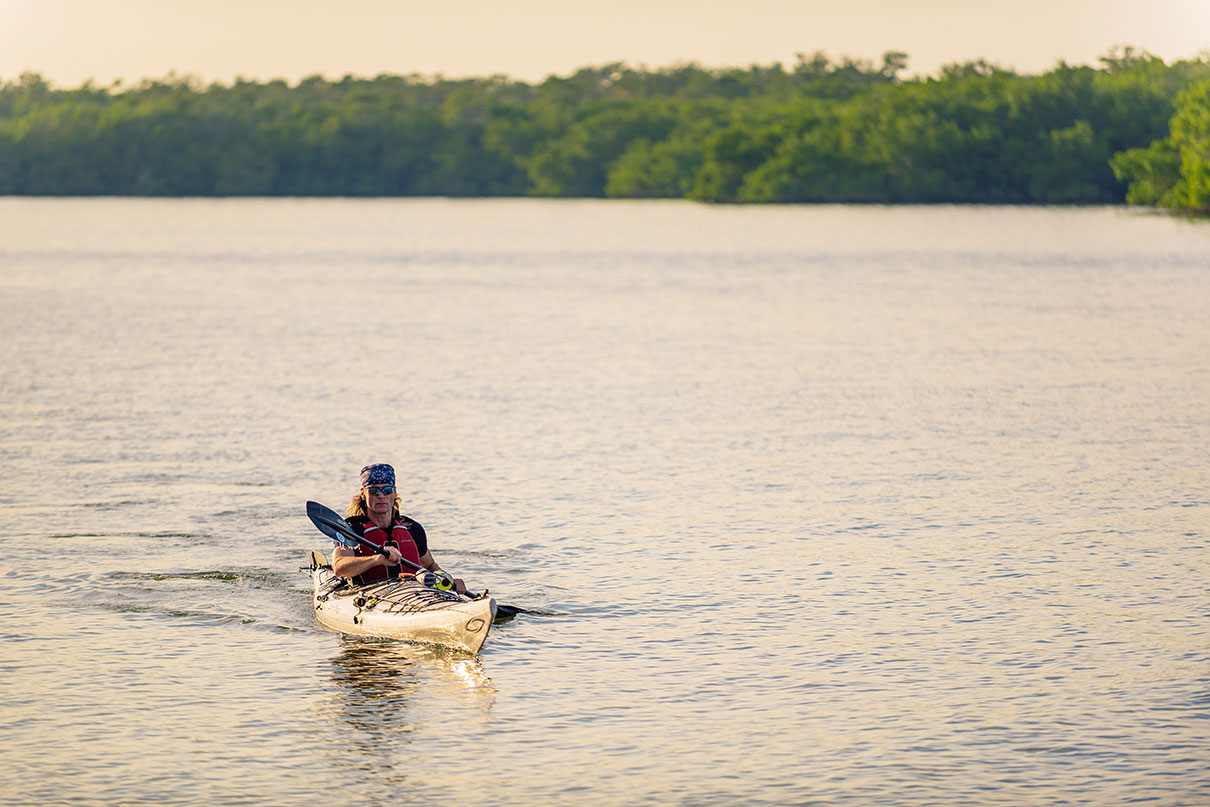
Challenging advanced stretches
For experienced paddlers seeking a more advanced adventure, the five-mile crossing from the Pine Island canoe and kayak launch to the historic Cabbage Key Inn & Restaurant offers a challenging trip with a worthy reward. Some say Jimmy Buffet’s song “Cheeseburger in Paradise” was inspired by the burgers there. The restaurant, known for its laid-back atmosphere, serves fresh seasonal seafood and, of course, cheeseburgers to salivating paddlers year-round.
Another rewarding trip for experienced kayakers is the journey from Pine Island to Cayo Costa State Park. Cayo Costa offers miles of undeveloped shorelines perfect for snorkeling, shelling, fishing and camping at the edge of the Gulf of Mexico. Despite Hurricane Ian’s impact in 2022, the park remains a must-visit destination for those with a sense of adventure.
Extensive resources available
The Calusa Blueway has maps, trips ideas and answers to frequently asked questions online. For example, understanding the lightning storms that can move in fast for an unsuspecting visitor. “Our main focus is watching the weather,” says Hammond. “While some worry about wildlife, weather changes quickly in Florida.”
The blueway even has its own app.
Hammond also encourages checking the tide charts that are linked on blueway’s website before hitting the water. Tidal changes can create strong currents, particularly in passes, so it’s important to be prepared.
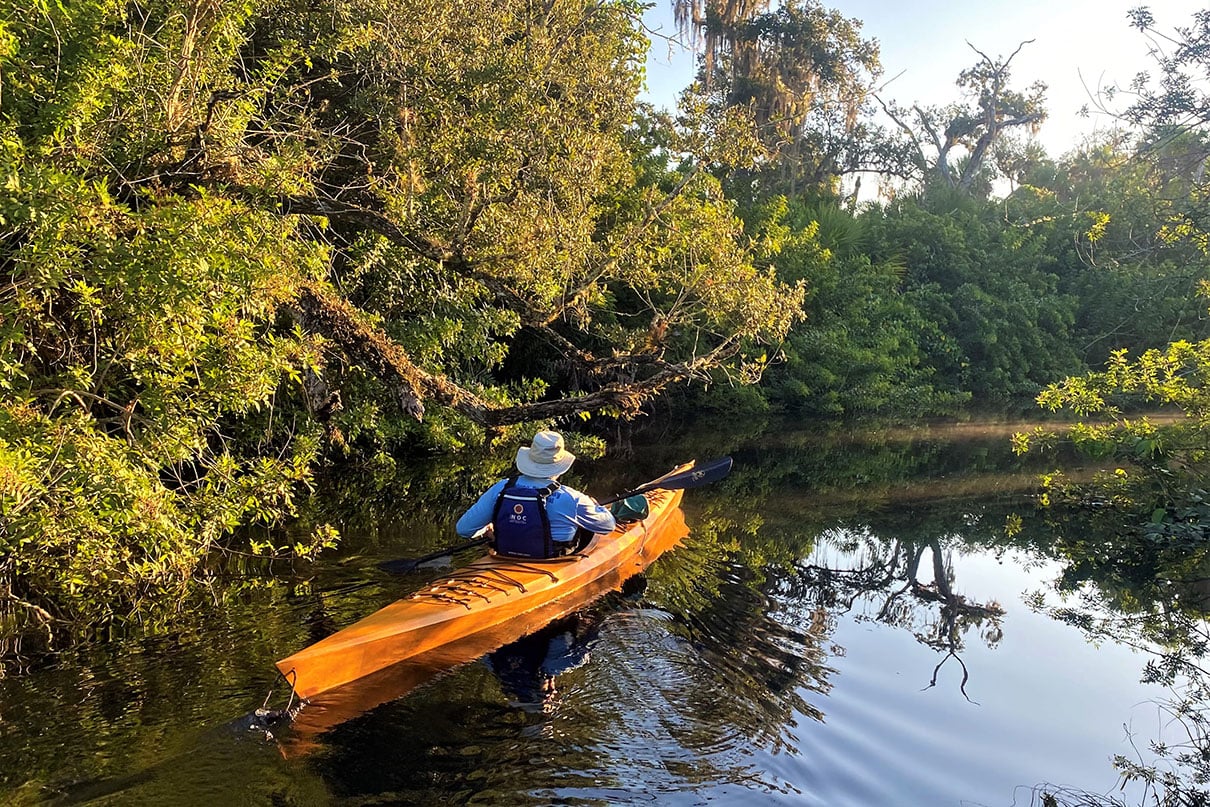
Recovery and resilience after Hurricane Ian
In September of 2022, Hurricane Ian made landfall as a Category 4 storm near Cayo Costa. The storm caused $112.9 billion in total damages, with Southwest Florida being one of the hardest-hit regions. The road to recovery has been long, but the paddling community came together to rebuild and help restore the area’s waterways. In fact, cleanups began soon after the storm, and efforts continue to this day.
Hammond has witnessed remarkable progress over the past two years and is excited to welcome paddlers from across the country—and the world—to experience the magic of the blueway.
“It’s such an adventure, but anyone can have it. You can hop in just a few miles from your hotel or resort and feel like you’re in an episode of National Geographic.”
To find more paddling opportunities in Southwest Florida, visit The Great Calusa Blueway.
Feature photo: Lee County Visitor & Convention Bureau


